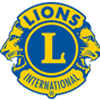On the 25th of April, 2015, a deadly earthquake hit Nepal. This quake measured 7.9 on the Richter scale. With the Lamjung district at the epicentre, this was the worst natural calamity since the 1934 Nepal-Bihar earthquake. It triggered an avalanche on Mount Everest, killing at least nineteen people and making it the deadliest day on the mountain in history. It also triggered another huge avalanche in the Langtang valley, where 250 people were reported missing. So far, the earthquake has claimed nearly 9000 lives and has injured more than 21,000 people across the country. Many have lost their loved ones, homes and livelihoods. Centuries-old buildings have been destroyed at multiple UNESCO World Heritage sites in the Kathmandu valley.
Continued aftershocks occurred throughout Nepal at 15 to 20 minute intervals, with one shock reaching a magnitude of 6.7 on April 26th. A second earthquake, measure 7.3 on the Richter scale, hit eastern Nepal on the 12th of May. At least 32 people were killed and over 1000 were injured.
The country has also had a continued risk of landslides, making emergency response almost impossible. Geophysicists and other experts had warned for decades that Nepal was vulnerable to a d early earthquake, as result of geology, urbanisation and architecture. Nepal, being a landlocked country, is one of the poorest nations. It has inadequate infrastructure, and was unprepared for a natural disaster of this scope.
The Lions Club of Pokhara Annapurna has provided social care and community development for over twenty five years, focusing on the needs of rural communities. Within twenty four hours of the recent earthquake, the Lions organised emergency relief operations. Initially, these operations were in the Gorkha region, which is near the epicentre. They were then extended to other affected areas, in partnerships with concerned stakeholders, including the local government officials, the Nepal Army and international aid organisations.
Helicopters delivered practical bundles, including foods, tents and medicines, to flat flung villages impassable by road. Injured victims were airlifted to Pokhara valley, where they were hospitalised and received medical treatment. We are continuing to organise transports to those victims who are slowly becoming able to return to their villages. However, almost 90% of those houses have been completely flattened.
The situation continues to be grave, with many in desperate need of housing and other basic necessities. We, the Lions Club of Pokhara Annapurna, are ready to increase our share of responsibility, to provide practical assistance to the affected communities. Some immediate and short-term needs for the affected communities include food, medicine, temporary shelter, evacuation of victims and other relief workers.
